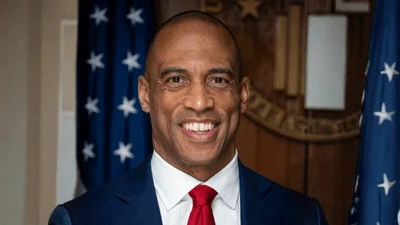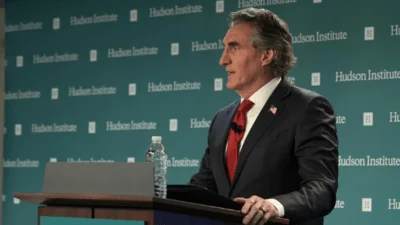Brian Smith, Assistant Secretary for Financial Markets | https://www.linkedin.com/in/brian-smith-74060563/
The Treasury Borrowing Advisory Committee (TBAC) held its quarterly meeting on November 4, 2025, at the Department of the Treasury. The session included participation from all committee members except Gagan Singh, with Allison Weed from Citigroup assisting the Committee Chair. Several officials from the Treasury and staff from the Federal Reserve Bank of New York were also present.
Deputy Assistant Secretary for Federal Finance Brian Smith opened the meeting by expressing gratitude to outgoing Vice Chair Mohit Mittal and summarizing recent developments in debt management. Smith addressed the ongoing lapse in appropriations and referenced Appendix B to Treasury’s Uniform Offering Circular regarding contingencies for Treasury Inflation Protected Securities (TIPS) related to Consumer Price Index availability.
Director of Fiscal Projections Nick Steele reported that fiscal year 2025 receipts reached $5.235 trillion, a 6% increase over last year, driven by growth in withheld taxes and a significant rise in customs deposits due to higher tariff receipts. Outlays rose by 4% to $7.01 trillion, mainly because of increased interest costs and inflation adjustments on transfer payments. Adjustments for tax deferrals would have shown an even higher growth rate in receipts.
Fred Pietrangeli, Director of the Office of Debt Management, discussed projections for privately-held net marketable borrowing. He noted that current auction sizes are expected to meet needs through fiscal year 2026 but identified larger financing gaps projected for fiscal years 2027 and 2028. Pietrangeli also pointed out that Federal Reserve reinvestments into Treasury bills will help reduce these future gaps.
Debt Manager Nicholas Chisholm reviewed primary dealers’ perspectives on changes to the size and composition of the Federal Reserve’s System Open Market Account (SOMA) portfolio. Dealers generally agreed with recent FOMC decisions regarding SOMA holdings and recognized uncertainty about when open market operations might resume to expand the balance sheet.
The committee examined tightening conditions in funding markets, noting that while rates have increased, repo markets remain orderly. Members attributed this environment partly to regulatory constraints and increases in both Treasury bill issuance and balances held in the Treasury General Account (TGA). The TGA balance recently reached $1 trillion as part of standard cash management practices following an increase in the debt limit earlier this year.
After reconvening post-lunch, Debt Manager Gavin Ross presented primary dealer expectations regarding coupon issuance. Dealers believe current auction sizes are sufficient through FY2026 but forecast increases—especially for two- and five-year notes—in subsequent years as financing needs grow.
Debt Manager Joshua Stachura summarized feedback on potential changes to auction schedules for twenty-year bonds and emphasized SOMA holdings' role in securities lending activities. Dealers suggested shortening periods between auctions and settlements could address persistent issues with repo specialness linked to long when-issued periods.
The committee then considered optimal debt issuance strategies using its Optimal Debt Model. The analysis showed that higher deficits and term premia have led to more volatile debt service costs recently but concluded that current issuance strategies align closely with efficient outcomes under various economic scenarios.
For upcoming quarters, TBAC recommended maintaining existing nominal coupon and floating rate note auction sizes while increasing December’s five-year TIPS reopening by $1 billion—mirroring a similar October adjustment—and keeping January’s ten-year new issue unchanged.
The final session included a summary report delivered by Committee Chair Deirdre Dunn to Secretary Scott Bessent along with discussion on recent market trends before adjourning.





